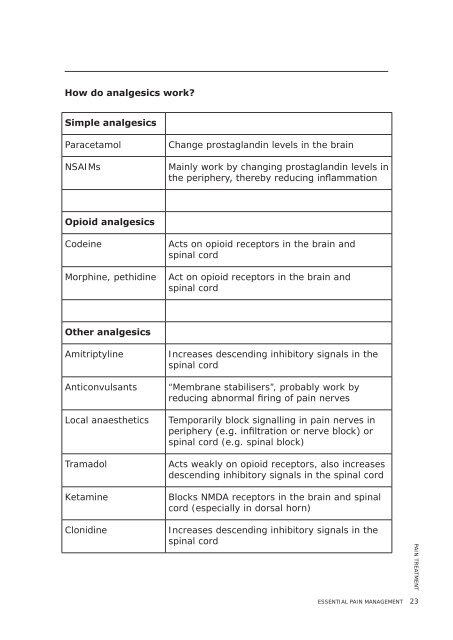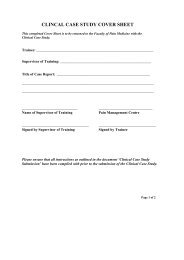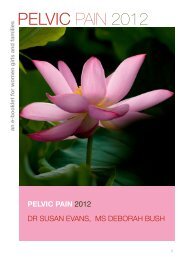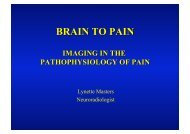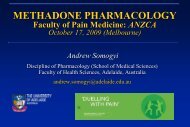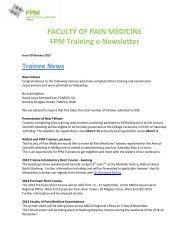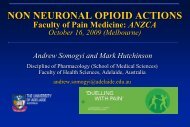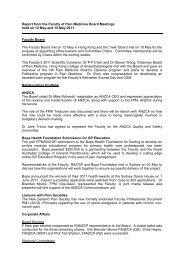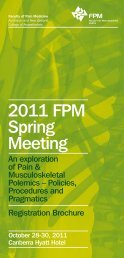Workshop Manual - Faculty of pain medicine - Australian and New ...
Workshop Manual - Faculty of pain medicine - Australian and New ...
Workshop Manual - Faculty of pain medicine - Australian and New ...
Create successful ePaper yourself
Turn your PDF publications into a flip-book with our unique Google optimized e-Paper software.
How do analgesics work<br />
Simple analgesics<br />
Paracetamol<br />
NSAIMs<br />
Change prostagl<strong>and</strong>in levels in the brain<br />
Mainly work by changing prostagl<strong>and</strong>in levels in<br />
the periphery, thereby reducing inflammation<br />
Opioid analgesics<br />
Codeine<br />
Morphine, pethidine<br />
Acts on opioid receptors in the brain <strong>and</strong><br />
spinal cord<br />
Act on opioid receptors in the brain <strong>and</strong><br />
spinal cord<br />
Other analgesics<br />
Amitriptyline<br />
Anticonvulsants<br />
Local anaesthetics<br />
Tramadol<br />
Ketamine<br />
Increases descending inhibitory signals in the<br />
spinal cord<br />
“Membrane stabilisers”, probably work by<br />
reducing abnormal firing <strong>of</strong> <strong>pain</strong> nerves<br />
Temporarily block signalling in <strong>pain</strong> nerves in<br />
periphery (e.g. infiltration or nerve block) or<br />
spinal cord (e.g. spinal block)<br />
Acts weakly on opioid receptors, also increases<br />
descending inhibitory signals in the spinal cord<br />
Blocks NMDA receptors in the brain <strong>and</strong> spinal<br />
cord (especially in dorsal horn)<br />
Clonidine<br />
Increases descending inhibitory signals in the<br />
spinal cord<br />
PAIN TREATMENT<br />
ESSENTIAL PAIN MANAGEMENT 23


